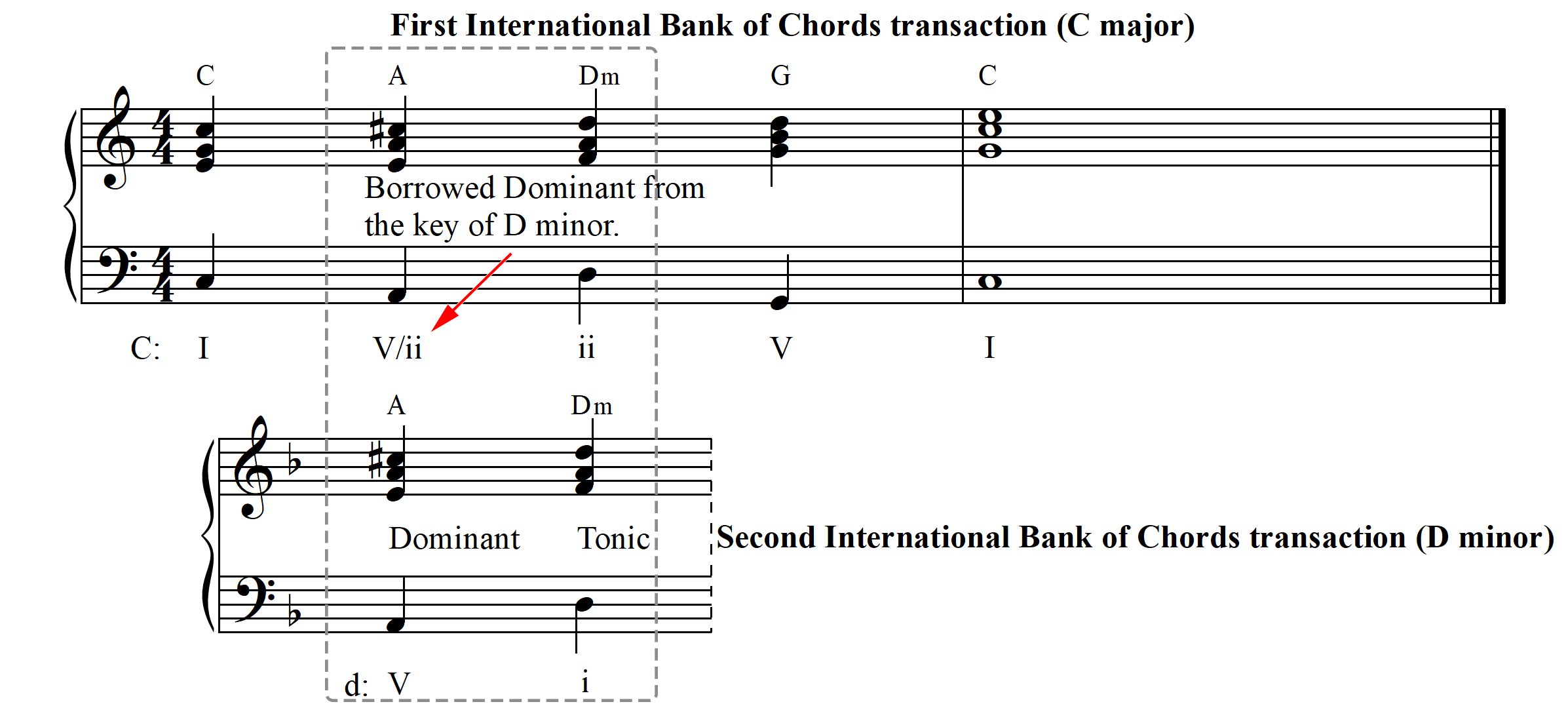Secondary Dominants
- or how to borrow money temporarily from a second bank - free!
It seems like a crazy idea: I'd like to borrow money temporarily, for a very short time - say one second, from a second bank. Actually, this idea is even crazier - there are twelve banks (just like the twelve chromatic pitches in an octave), any one of which I can borrow from in an instant. Now let's make it even more bizarre. We don't have to repay the money. Nutty, right? Well, you can do this - if you live in music land, where your greatest dreams can come true!
Let's explain this nearly magical phenomenon by looking at probably the most powerful chord progression in traditional harmony: the dominant-to-tonic one.


That sounds pretty normal, right? Now let's expand that basic progression into something more lengthy.

This is also a powerful and common chord progression. Nothing unusual here. Next comes the fun part! Let's borrow some money from a second bank - free, no interest, no payments! Of course, we can't really do this without getting sued by the bank. But in music we can think of the second bank as a second key. We can borrow from second keys - called secondary keys - any time we want. And there are no extra bank fees or laws broken. Yay!
Here's how it works. Think of the chord progression directly above as activity at the first bank (let's call it The First International Bank of Chords), which does business in the key of C major. Now let's walk into a second bank (hmm - The Second International Bank of Chords?), a secondary key. Let's use the key of D minor, which is the kind of money they work with. And to make the chord progression (our bank loan) a really powerful one, let's again use the dominant-to-tonic relationship.

That sounds great doesn't it? There's nothing like going into The Second International Bank of Chords and listening to the bank's official piano player play in D minor! Bravo! (If only banks did this sort of thing to support live music in our communities. I might just deposit and withdraw the same amount repeatedly in one visit just to hang out while the pianist played!) But I digress.
Now, let's take the chord progression from the second key, D minor, and transplant it into the first chord progression in the first key, C major. Notice that the Roman numeral V for the A chord now has a slash to show that it is borrowed from the second key, D minor, where the chord is tonic (not ii as in the key of C major). We call this borrowed chord the "V of ii" (spoken: "the five of two"). This A chord, since it's the dominant chord in the key of D minor (the one built on the fifth scale degree), is called a "secondary dominant". We could say it's legally borrowed from The Second International Bank of Chords if we prefer. No bank fees, no legal complications - plain old free!

All secondary dominant chords have the following characteristics:
- 1. Major chords.
- 2. Built on the dominant (fifth) scale degree in the key that is borrowed from.
- 3. Followed by a chord whose root is a perfect fifth lower.
- 4. They are chromatic chords which use at least one note not from the key or scale.
Here is an example containing lots of secondary dominant chords. Can you label them with Roman numerals and chord symbols? (Notice that they all have one or more chromatic chord members.)

